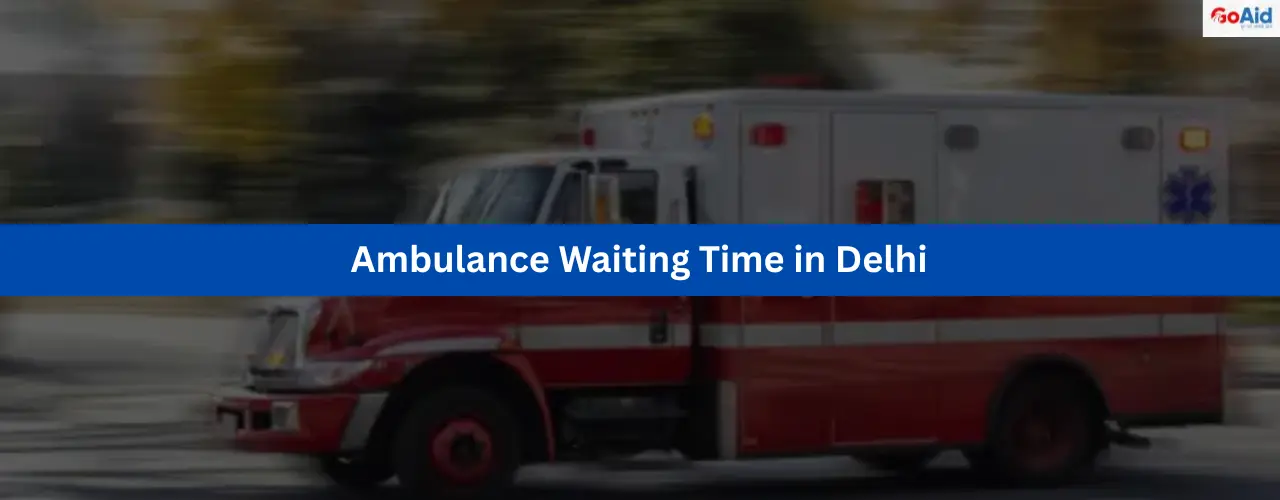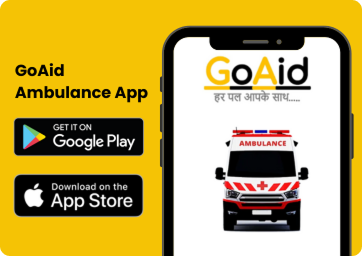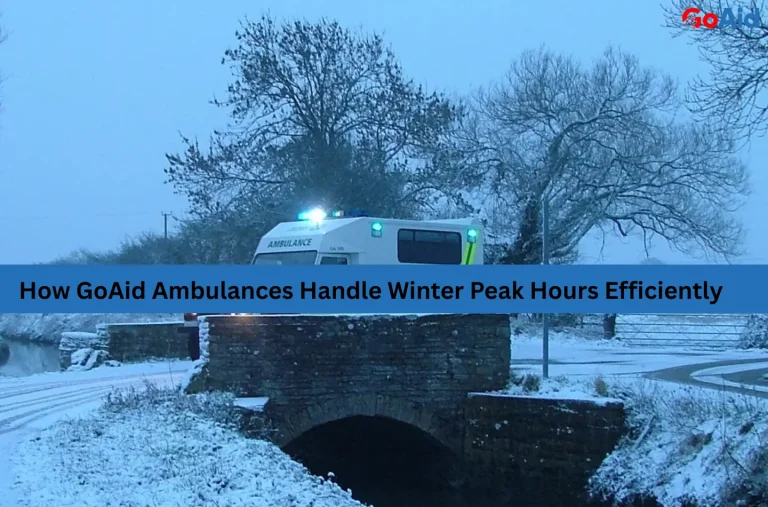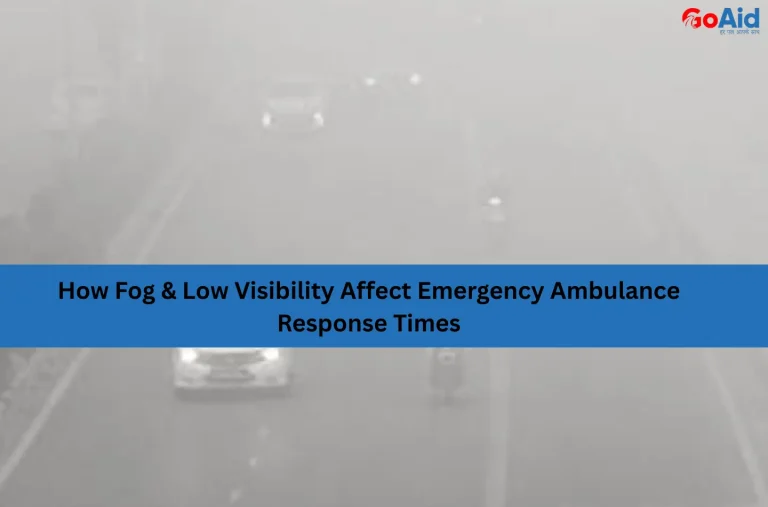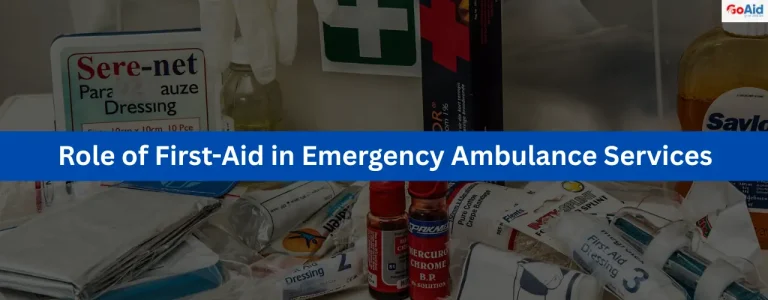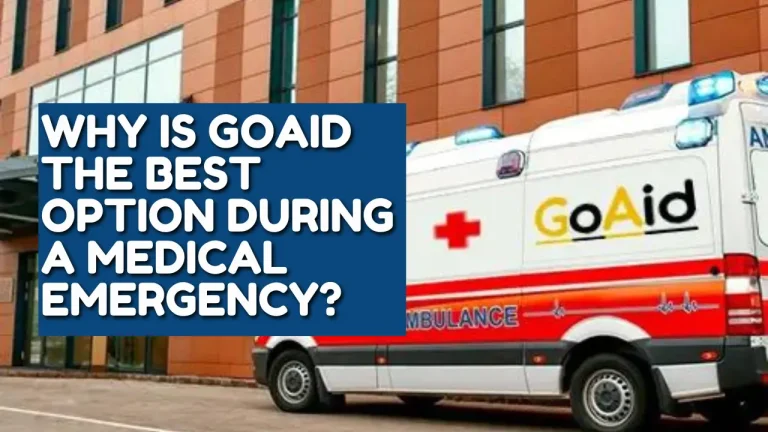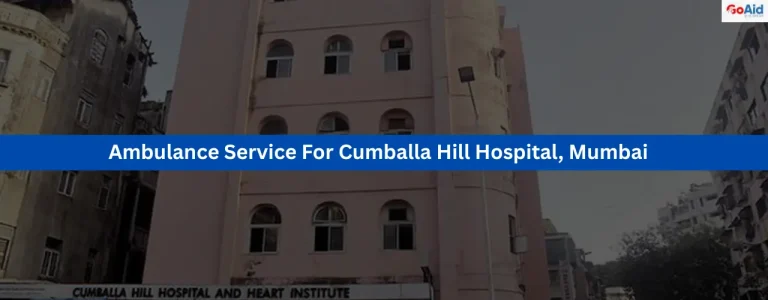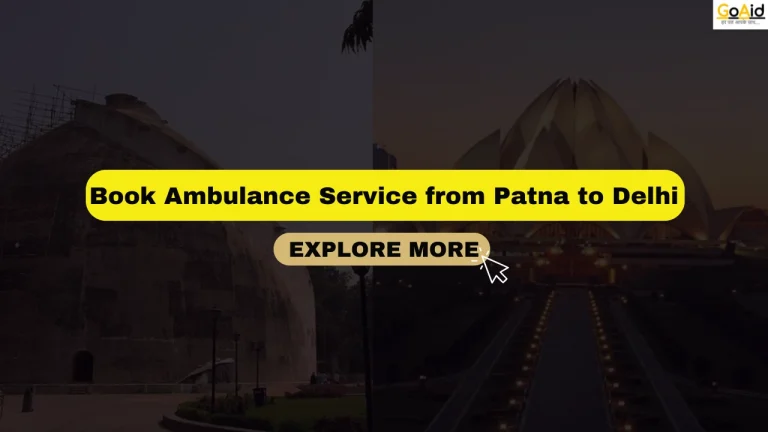In a busy and sprawling city like Delhi, a timely ambulance response can mean the difference between life and death. Unfortunately, long waiting times have often made emergency medical care challenging for many residents. ThatŌĆÖs why reducing ambulance waiting time is a top priority for healthcare providers in the capital.
In this blog, weŌĆÖll explain what ambulance waiting time is, why it matters specifically in Delhi, and the main factors that affect it. Most importantly, youŌĆÖll learn how GoAid successfully reduced ambulance waiting time by 90%, bringing faster emergency help to DelhiŌĆÖs people. Want to know how this transformation happened?
LetŌĆÖs get started:
What is the Ambulance Waiting Time in Delhi?
Ambulance waiting time in Delhi refers to the duration between a distress call and the ambulanceŌĆÖs arrival at the patientŌĆÖs location. In many cases across the city, this time has ranged from 20 to 40 minutes, depending on traffic, area accessibility, and service availability.┬Ā
Such delays can risk lives during critical emergencies. However, innovative private providers like GoAid have transformed the scenario. With a rapid-response model, GoAid reduced the average waiting time to just 10 minutes in most Delhi areas.
This advancement ensures faster medical aid, minimizing risks and improving emergency outcomes across the capital.
Why Ambulance Waiting Time Matters in Delhi
In DelhiŌĆÖs dense traffic and fast-paced life, every second counts during a medical emergency. Reducing ambulance waiting time can significantly improve survival and recovery outcomes.
1. Life-Saving Response
Shorter waiting time ensures quicker medical attention during critical emergencies like heart attacks, strokes, or trauma, directly improving chances of survival.
2. Emergency Stability
Fast ambulance arrival helps stabilize patients early, preventing further deterioration before reaching a hospital.
3. Reduced Anxiety
Prompt response lowers stress for patients and families, offering reassurance that help is on the way.
4. Better Trauma Management
Immediate care during accidents or violent incidents reduces long-term complications and disabilities.
5. Improved Traffic Coordination
Shorter wait times encourage the use of trained drivers who efficiently navigate DelhiŌĆÖs congested roads.
6. Hospital Preparedness
Timely alerts to hospitals allow medical teams to prepare for incoming critical patients, saving precious minutes.
7. Maternal and Child Care
Fast ambulances are vital for safe deliveries and neonatal emergencies, especially in underserved Delhi areas.
8. COVID and Infection Control
Quicker transport reduces exposure risk and helps manage infection spread during disease outbreaks.
9. Psychiatric Emergency Handling
Immediate help in mental health crises prevents self-harm or harm to others.
10. Public Trust in Healthcare
Reliable ambulance timing builds confidence in emergency healthcare systems and encourages timely medical intervention.
Key Factors Affecting the Ambulance Waiting Time in Delhi
Several challenges contribute to ambulance delays in Delhi. Understanding these key factors helps identify gaps in emergency response and highlights areas where improvements can make a life-saving difference.
1. Traffic Congestion
Delhi’s heavy traffic significantly delays ambulance movement, even with sirens, especially during peak hours or in densely populated areas.
2. Distance to Patient Location
Ambulances stationed far from the patientŌĆÖs location naturally take longer to arrive, especially in outer or underserved regions.
3. Availability of Ambulances
A shortage of ambulances or uneven distribution across Delhi affects response times, particularly during high-demand periods.
4. Navigation Challenges
Unclear addresses, narrow lanes, or a lack of digital mapping in some areas slow down ambulance drivers.
5. Untrained Drivers or Staff
Inexperienced drivers may struggle with route optimization or crisis handling, leading to longer response times.
6. Delayed Booking Response
Slow dispatch systems or manual booking delays can increase waiting times before the ambulance even starts.
7. Lack of Public Awareness
Unawareness about emergency numbers or how to book an ambulance quickly can cause delays in receiving timely help.
How GoAid Reduced the Ambulance Waiting Time by 90% in Delhi?
GoAid transformed emergency care in Delhi by cutting ambulance response time dramatically. HereŌĆÖs how their innovative strategies brought faster, more reliable medical help across the city.
1. 10-Minute Arrival Promise
GoAid introduced a 10-minute ambulance arrival promise by strategically deploying ambulances across key city zones. With it, we ensure faster access regardless of location or traffic conditions.
2. GPS-Based Dispatch System
Advanced GPS tracking helps GoAid locate and dispatch the nearest available ambulance instantly, optimizing routes and minimizing travel time, even in DelhiŌĆÖs most congested areas.
3. 24/7 Service Availability
GoAid operates round-the-clock. With it, we ensure ambulance readiness at any hour. This 24/7 availability avoids delays caused by limited working hours or staff shortages.
4. Multiple Booking Channels
Users can book ambulances via the app or by calling 8008280020. These fast, user-friendly options eliminate wait times associated with traditional emergency service processes.
5. Experienced Paramedic Teams
GoAid staffs ambulances with trained paramedics. With it, we ensure faster on-site response and quicker medical assessments, stabilizing patients before hospital arrival.
6. Real-Time Monitoring
Live tracking of ambulances allows the control center to manage delays proactively, adjust routes, and maintain the 10-minute arrival target.
7. Data-Driven Deployment
Using demand data, GoAid stations ambulances in high-need areas, reducing response delays in emergencies like accidents, strokes, or cardiac events.
8. Fleet Diversification
GoAid offers different ambulance typesŌĆöNormal, BLS, ALS, ICUŌĆöto suit specific emergencies. With it, we ensure that the right help reaches faster.
Know More: Difference between BLS Ambulance and ALS Ambulance
9. Private Road Clearance Support
With local coordination, GoAid drivers receive help in navigating traffic or blocked roads quickly, reducing further delays in urgent cases.
10. Dedicated Emergency Response Training
Drivers and staff undergo intensive training to handle high-pressure emergencies, route planning, and traffic navigation efficiently, reducing waiting time significantly.
Conclusion to the Ambulance Waiting Time in Delhi
In conclusion, we have provided you with all the details about ambulance waiting times in Delhi and explained how GoAid Ambulance Service in Delhi has successfully reduced waiting times by 90%. Their advanced technology, strategic ambulance placement, and 24/7 availability make GoAid Ambulance in Delhi a reliable choice during emergencies.┬Ā
Faster ambulance response saves lives and ensures timely medical care. If you have any other questions or experiences to share about ambulance service in Delhi, feel free to ask in the comment box below.
FAQs related to the Ambulance Waiting Time in Delhi
Question-1: What is the average ambulance waiting time in Delhi?
Answer: Ambulance waiting time in Delhi usually ranges from 20 to 40 minutes. GoAid Ambulance Service in Delhi has reduced this time to an average of just 10 minutes for faster emergency care.
Question-2: How can I book an ambulance in Delhi with GoAid?
Answer: You can book a GoAid Ambulance in Delhi easily through their mobile app or by calling their helpline at 8008280020, available 24/7 for quick response.
Question-3: What types of ambulances does GoAid offer in Delhi?
Answer: GoAid Ambulance Service in Delhi provides various ambulance types, including Normal, BLS, ALS, ICU, ventilator, and mortuary ambulances tailored to different emergency needs.
Question-4: Is the GoAid Ambulance Service in Delhi available all day?
Answer: Yes, GoAid Ambulance in Delhi operates 24/7. With it, we ensure ambulance availability and rapid response at any hour throughout the year.
Question-5: Are the ambulance charges by GoAid in Delhi affordable?
Answer: GoAid Ambulance Service in Delhi follows government-approved, affordable pricing. This makes it one of the most cost-effective ambulance services in Delhi.
Question-6: Does GoAid Ambulance Service cover all areas of Delhi?
Answer: Yes, GoAid Ambulance in Delhi strategically deploys ambulances citywide. With it, we ensure quick access even in remote or traffic-heavy parts of the city.
Question-7: Can I track the ambulance booked through GoAid in Delhi?
Answer: Yes, GoAid Ambulance Service in Delhi offers real-time GPS tracking, allowing patients and families to monitor ambulance location and estimated arrival time.
Question-8: Does GoAid provide free ambulance service for pregnant women in Delhi?
Answer: Yes, GoAid Ambulance Service in Delhi offers free ambulance service to pregnant women to ensure safe and timely transport to healthcare facilities.
Question-9: How does GoAid reduce ambulance waiting time in Delhi?
Answer: GoAid Ambulance in Delhi uses GPS dispatch, strategic ambulance positioning, trained paramedics, and multiple booking options to minimize ambulance waiting time efficiently.
Question-10: Is GoAid Ambulance Service in Delhi reliable during peak hours?
Answer: Yes, GoAid Ambulance Service in Delhi maintains quick response times even during peak traffic hours by optimizing routes and fleet deployment to handle high demand.

